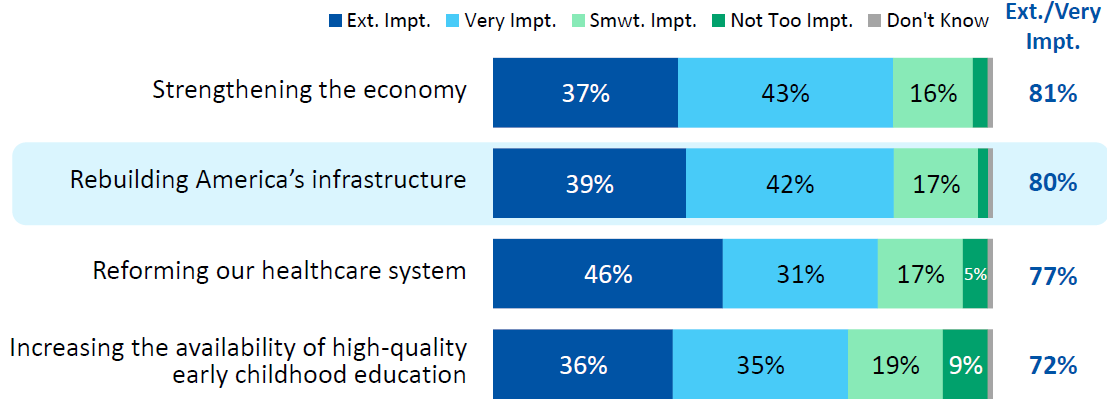Coronavirus Exposes Long-Standing Infrastructure Funding Vulnerabilities
The latest Value of Water Campaign bipartisan poll funded by the US Water Alliance finds that 84 percent of Americans polled want the federal government to invest in water infrastructure.
Rebuilding water infrastructure is a top priority for Americans across geography, age, income and political parties, just below strengthening the economy and just above reforming our healthcare system. Support for local water providers is strong, with more than four in five indicating that they are satisfied with their local water and wastewater service and three-quarters stating that what they pay for their water and wastewater service is affordable. However, perceptions that national water infrastructure is in good condition have declined by 10 percentage points since 2016, to just 49 percent.

Federal investments into water and wastewater infrastructure might become even more crucial to maintaining essential services, as local utilities across the nation are projecting reduced revenues. Circle of Blue reports that water utilities might lose a total of $13.9 billion in revenue from coronavirus impacts such as reduced/shifted consumption, prohibitions on turning off services or late fees, and increased delinquency rates. This water revenue loss increases by an additional $1.6 billion if water utilities don’t implement needed rate adjustments. If you include wastewater utilities, there’s an additional $12.5 billion of potential lost revenue associated with the coronavirus.
Water and wastewater utilities have been struggling for decades with the push and pull of increased expenses and aging infrastructure on one side of the ledger and the desire to minimize rate adjustments on the other side. Recent economic conditions have served to expose those long-standing vulnerabilities. Rate structures that foster affordability will be increasingly important.
With the perception that there needs to be more funding coupled with projections that revenues will be severely impacted by coronavirus, what is the solution? Part 2 of our series will cover accessible and impactful infrastructure funding opportunities across the nation.


